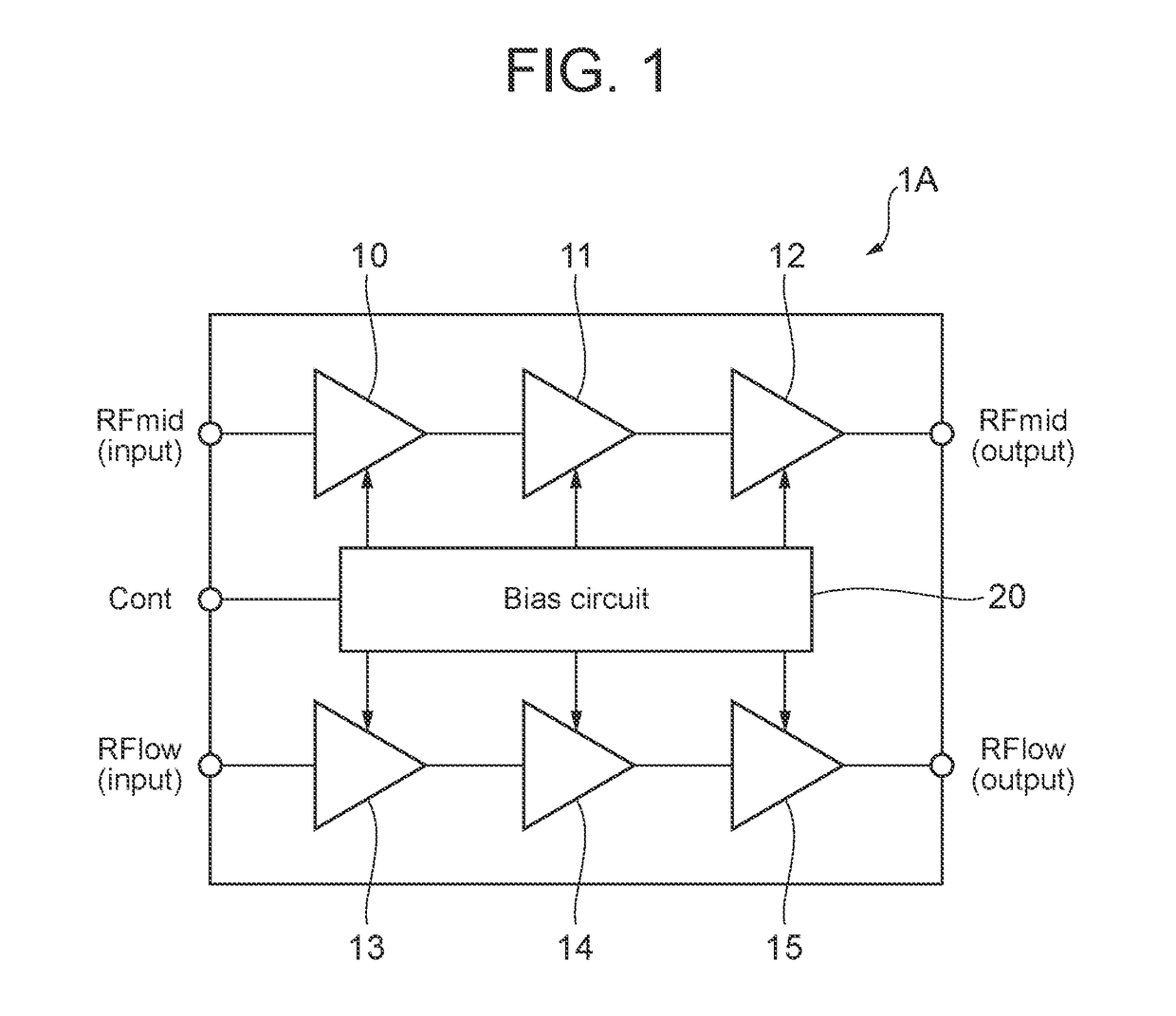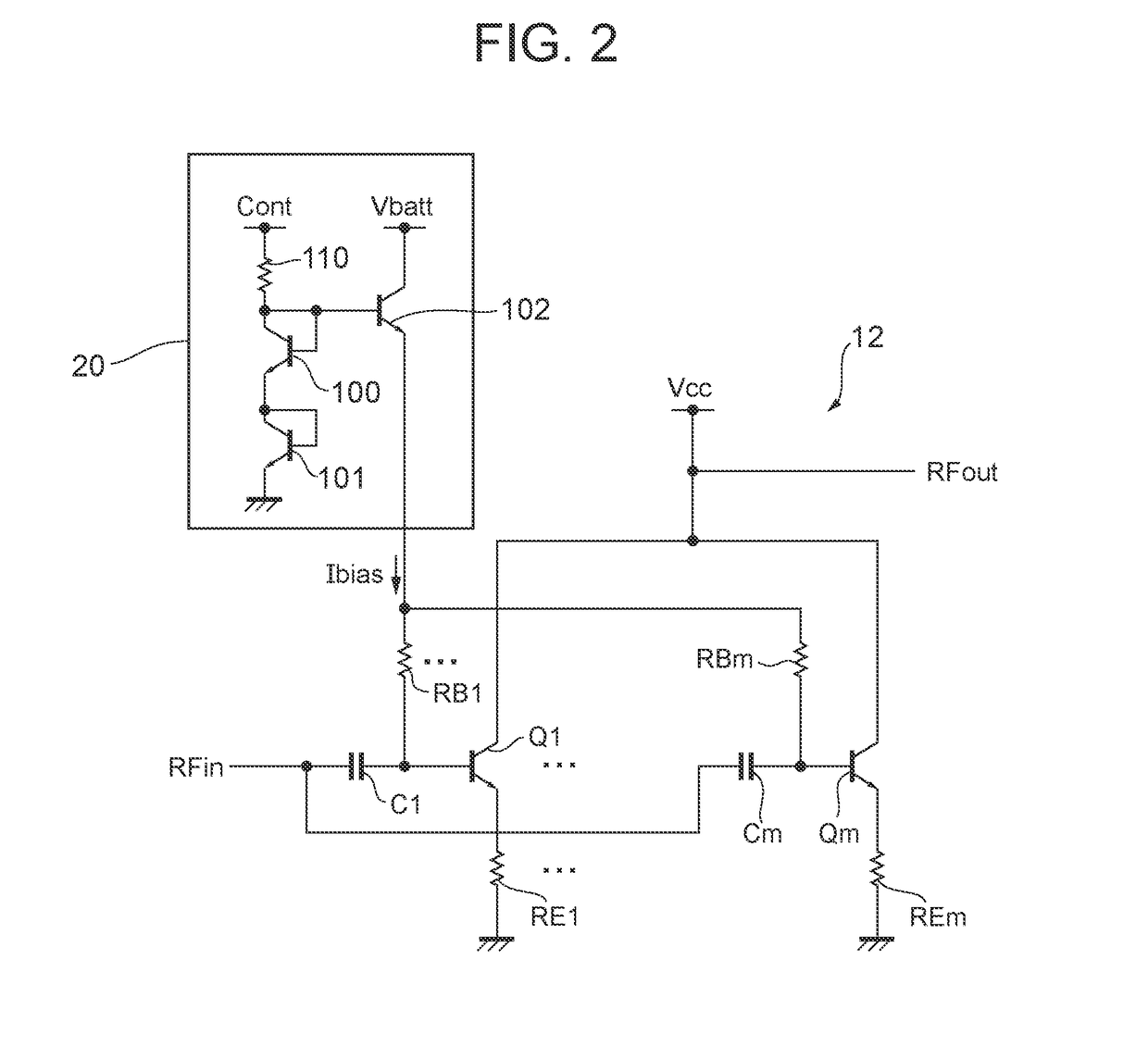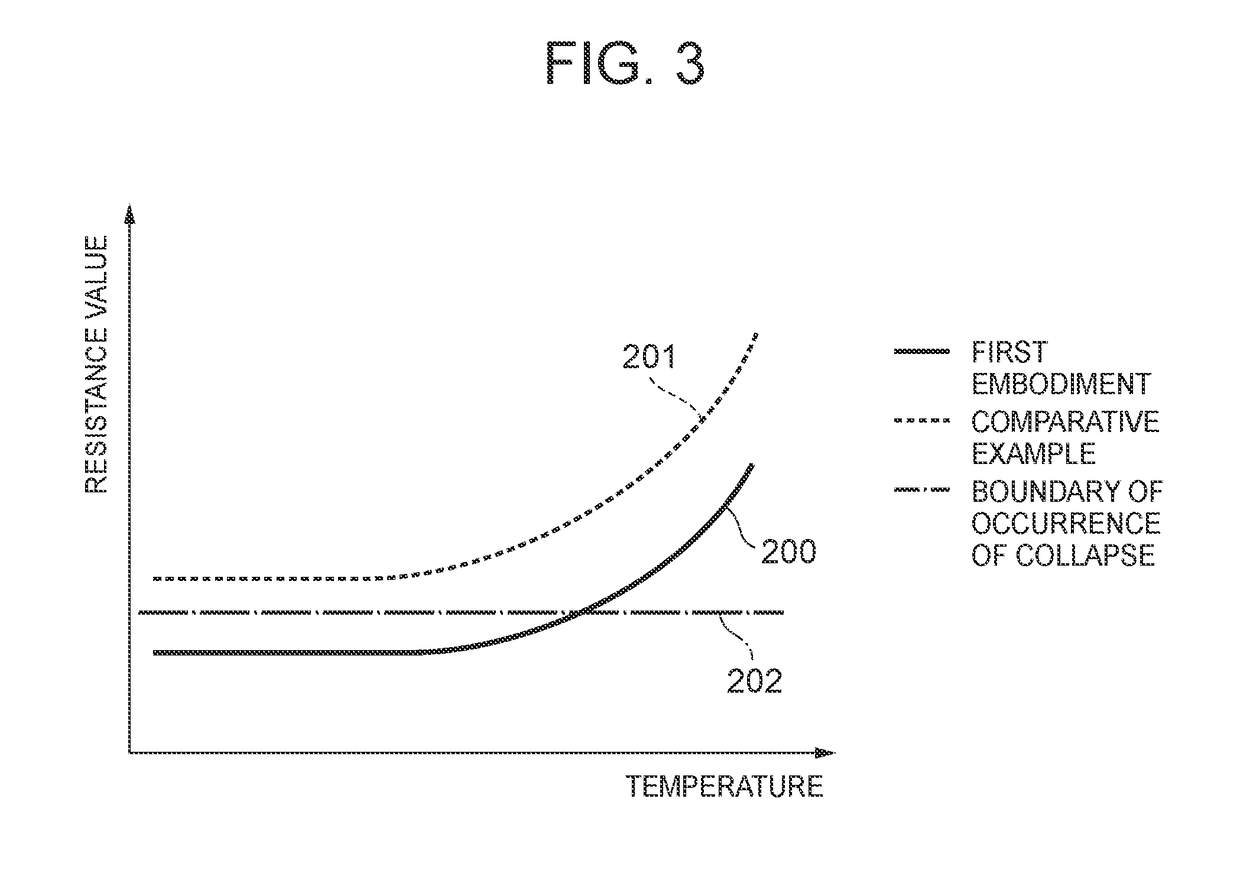Power amplifier circuit
- Summary
- Abstract
- Description
- Claims
- Application Information
AI Technical Summary
Benefits of technology
Problems solved by technology
Method used
Image
Examples
first embodiment
[0022]FIG. 1 is a diagram illustrating a configuration example of a power amplifier circuit according to the present invention. A power amplifier circuit 1A illustrated in FIG. 1 is, for example, installed in a cellular phone and used to amplify the power of radio frequency (RF) signals transmitted to a base station. The communication standards for the RF signals to be amplified include, for example, the second generation mobile communication system (2G), the third generation mobile communication system (3G), the fourth generation mobile communication system (4G), the fifth generation mobile communication system (5G), the long term evolution (LTE)-frequency division duplex (FDD), the LTE-time division duplex (TDD), the LTE-Advanced, and LTE-Advanced Pro. The communication standards for the signals to be amplified by the power amplifier circuit 1A are not limited to the above.
[0023]The power amplifier circuit 1A has, for example, two amplification paths. To be specific, the power amp...
second embodiment
[0045]FIG. 6 is a diagram illustrating a configuration example of a power amplifier circuit according to the present invention. A power amplifier circuit 1B illustrated in FIG. 6 differs from the power amplifier circuit 1A illustrated in FIG. 1 in that both the first path and the second path are provided with two systems of amplifiers in the third stage.
[0046]To be specific, the power amplifier circuit 1B has amplifiers 30 and 31 in place of the amplifier 12, and also has amplifiers 32 and 33 in place of the amplifier 15. The amplifier 30 and the amplifier 31, and the amplifier 32 and the amplifier 33 are appropriately used according to the operation mode of the power amplifier circuit 1B. More specifically, an example of the first path of a middle band will be described. For example, if the power amplifier circuit 1B is in a high power mode (a first mode) for outputting power of a predetermined level or more, then both the amplifiers 30 and 31 will be turned on, and if the power am...
third embodiment
[0051]FIG. 8 is a diagram illustrating an example of the circuit diagram of amplifiers and bias circuits included in a power amplifier circuit according to the present invention. A power amplifier circuit 1C illustrated in FIG. 8 differs from the power amplifier circuit 1B illustrated in FIG. 7 in that an amplifier 31 does not have the resistive elements RB1b to RBnb.
[0052]In other words, in the power amplifier circuit according to the present embodiment, it is not always necessary to provide all unit transistors with both the emitter ballast resistors and the base ballast resistors. As illustrated in FIG. 8, some transistors may be provided with the emitter ballast resistors and the base ballast resistors, whereas the other transistors may be provided with either the emitter ballast resistors or the base ballast resistors. For example, the power amplifier circuit 1C employs the configuration in which unit transistors Q1a to Qma (i.e., the unit transistors that operate only in the h...
PUM
 Login to View More
Login to View More Abstract
Description
Claims
Application Information
 Login to View More
Login to View More - R&D
- Intellectual Property
- Life Sciences
- Materials
- Tech Scout
- Unparalleled Data Quality
- Higher Quality Content
- 60% Fewer Hallucinations
Browse by: Latest US Patents, China's latest patents, Technical Efficacy Thesaurus, Application Domain, Technology Topic, Popular Technical Reports.
© 2025 PatSnap. All rights reserved.Legal|Privacy policy|Modern Slavery Act Transparency Statement|Sitemap|About US| Contact US: help@patsnap.com



